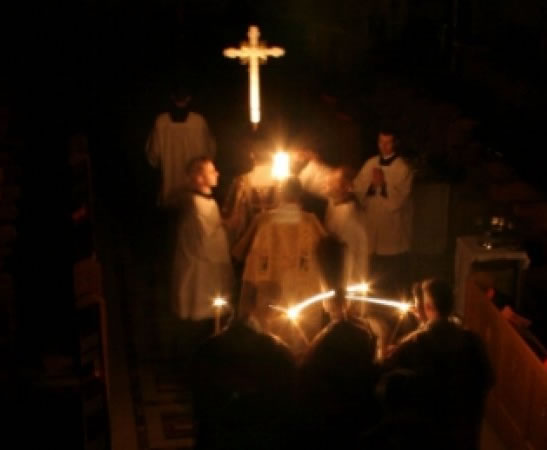

Lumen Christi gloriose resurgentis
Dissipet tenebras cordis et mentis.
Let us also pray together, using the form given by Leo XIII, the Exorcism against Satan and the Apostate Angels (Exorcismus in Satanam et angelos apostaticos, Rituale Romanum, Tit. XII, Caput III), so we can all fight together the common enemy of the whole human race.
The liturgical reforms of Pope Pius XII continued a process initiated by Pope Pius X. In February of 1951, the Holy See under Pope Pius XII issued a decree restoring the Easter Vigil to Holy Saturday night. The decree states that by its gradual removal, in the course of centuries, to Saturday morning, this ancient and most important rite had suffered loss of significance. Furthermore, few of the faithful could attend the Saturday morning service. In response, therefore to petitions from throughout the world, the Holy See determined to permit the celebration of the restored Easter Vigil.
The following introduction comes from the “Order for the Restored Vigil of Easter in Latin and English” by the Newman Press in 1953, Imprimatur. This book is available for download in PDF format.
We have here a restoration not only of the Vigil of Easter, but really of the Easter solemnity itself. For long centuries the actual Easter liturgy had been relegated to an empty church and a hurried, half-understood ceremony on Holy Saturday morning. The Sunday morning Mass, of later composition, was an ineffective substitute with little to distinguish it from that of any other Sunday. The Holy Father has not merely restored the ancient rite, but he has given it strong new power to celebrate the Resurrection of our Lord and to communicate its present graces to our souls. The tremendous climax is reached in the Holy Sacrifice, offered triumphantly by the risen Lord in and with His jubilant members. But it is prepared for- by probably the most telling ritual in the Church’s year:
- The blessing of the paschal candle vividly expresses the fact of the Resurrection of our Lord and its constant renewal in His Mystical Body. Blessed and inscribed as an image of the glorified Body, how graphically it proclaims the mystery as it appears in the darkened church, this candle which is Christ! As He moves among us we touch our candles, and our hearts, to His pure flame until we are ourselves all one body glowing with His life and His light. The candle-Christ is then set in the middle of the sanctuary as upon a throne, and the church resounds with the Exultet, “the great cosmic joy of a redeemed world” in the presence of its Redeemer.
- Then follow the modernized lessons, the prophecies, designed not as formerly for the last minute instruction of those to be baptized, but rather for the stirring up of our faith in the graces we are about to receive.
- The blessing of the baptismal water follows the old rite, but is carried out with full dramatic effect, in plain view of the faithful, every effort being made to impress us with the fact that baptism is our share in the Resurrection, our manner of rising from soul-death and entering into the very life of God. The renewal of baptismal vows in the vernacular is a startling innovation, calculated to stir us to make of Easter a great new beginning of our Christian life. Holy Mass is then solemnized, a memorial of the blessed Passion, but more especially tonight than at any other time, a triumphant affirmation of the Resurrection. Christ conquers, Christ reigns, Christ ever lives to make intercession for us and to gather us into the kingdom of His love.
The Lenten fast ends everywhere at midday on Holy Saturday. The Vigil is to commence at such an hour that Mass will begin about midnight. All those attending will fulfill their obligation of Sunday Mass; those who wish to receive Holy Communion must be fasting from 10 p.m. and they may not receive again on Sunday morning.
The Bishop may, in certain exceptional circumstances, allow the Vigil to be held earlier. Attendance in such cases will not fulfill the obligation of Sunday Mass. Those wishing to receive Holy Communion must be fasting from 7 p.m.; if they receive before midnight they may communicate again on Sunday morning, provided they are fasting in the usual way. However, no one who has received Holy Communion on Saturday morning may receive again before midnight on the same day.
~ From the decree of the Sacred Congregation of Rites, 11 January, 1952.

-
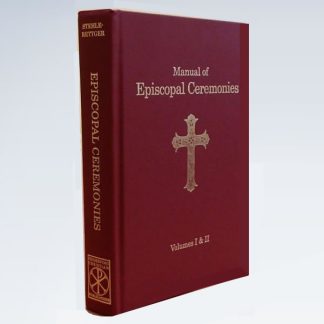 Manual of Episcopal CeremoniesUS$ 65.00
Manual of Episcopal CeremoniesUS$ 65.00 -
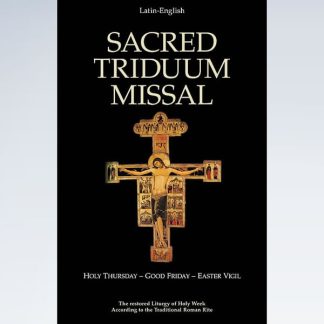 Sacred Triduum MissalUS$ 15.00
Sacred Triduum MissalUS$ 15.00 -
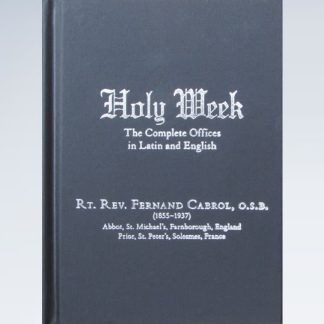 Holy Week – The Complete Offices in Latin and EnglishUS$ 35.00
Holy Week – The Complete Offices in Latin and EnglishUS$ 35.00 -
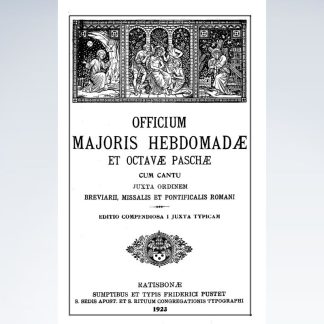 Officium Majoris Hebdomadæ Et Octavæ PaschæUS$ 25.00
Officium Majoris Hebdomadæ Et Octavæ PaschæUS$ 25.00 -
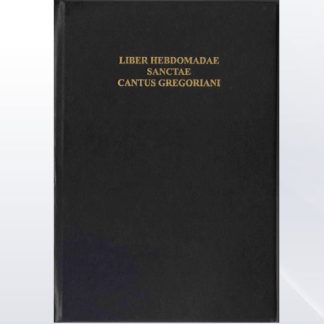 Liber Hebdomadae Sanctae Cantus Gregoriani (Holy Week Gregorian Chant)US$ 22.00
Liber Hebdomadae Sanctae Cantus Gregoriani (Holy Week Gregorian Chant)US$ 22.00 -
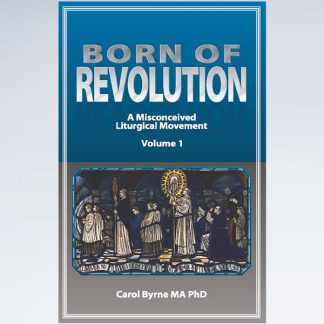 “Born of Revolution: A Misconceived Liturgical Movement” by Dr. Carol Byrne (PDF File)US$ 10.00
“Born of Revolution: A Misconceived Liturgical Movement” by Dr. Carol Byrne (PDF File)US$ 10.00
VIRGÓ SACRÁTA is a Christian mission-driven online resource and shop inspired from the beauty of Catholic faith, tradition, and arts. Our mission is to “Restore All Things to Christ!”, in continuing the legacy of Pope St. Pius X under the patronage of the Blessed Virgin Mary. “Who is she that cometh forth as the morning rising, fair as the moon, bright as the sun, terrible as an army set in battle array?” O Mary, conceived without sin, pray for us who have recourse to Thee.


